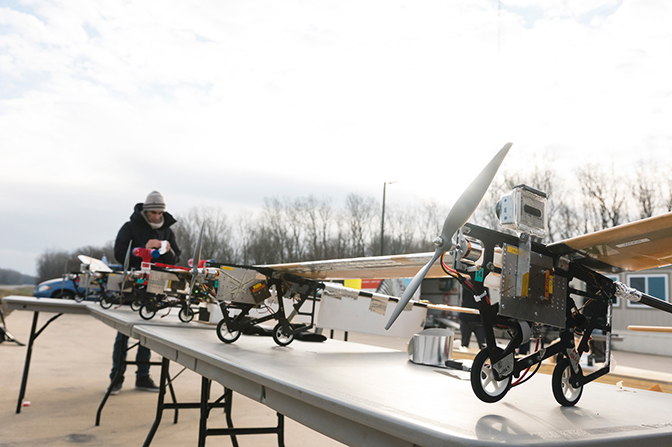The X-HALE: A high altitude long endurance aircraft
The X-HALE’s flexibility and wing length could change the future of commercial flight.
The X-HALE’s flexibility and wing length could change the future of commercial flight.

University of Michigan Aerospace Engineering professor Carlos Cesnik designed and built the X-HALE, an experimental high-altitude long endurance unmanned aerial vehicle, and flight simulation software that will allow them to test the uncertainties and obstacles of long winged aircrafts. This experimental aircraft has very flexible, long-wings. Aircraft with longer wings have a higher aerodynamic performance due to reduced drag. A 50% increase in wing aspect ratio would lead to 10% less fuel burn, significantly cutting back airplane emissions.
As a society we are looking for ways that we can fly more efficiently.
Carlos Cesnik
ASME
February 27, 2020
How long can a drone stay in the sky?
Aerospace Professor Carlos Cesnik is developing a prototype high altitude long endurance (HALE) aircraft that incorporates thin deformable wings. The target application for this technology is unmanned aircraft that can stay aloft for months at a time.